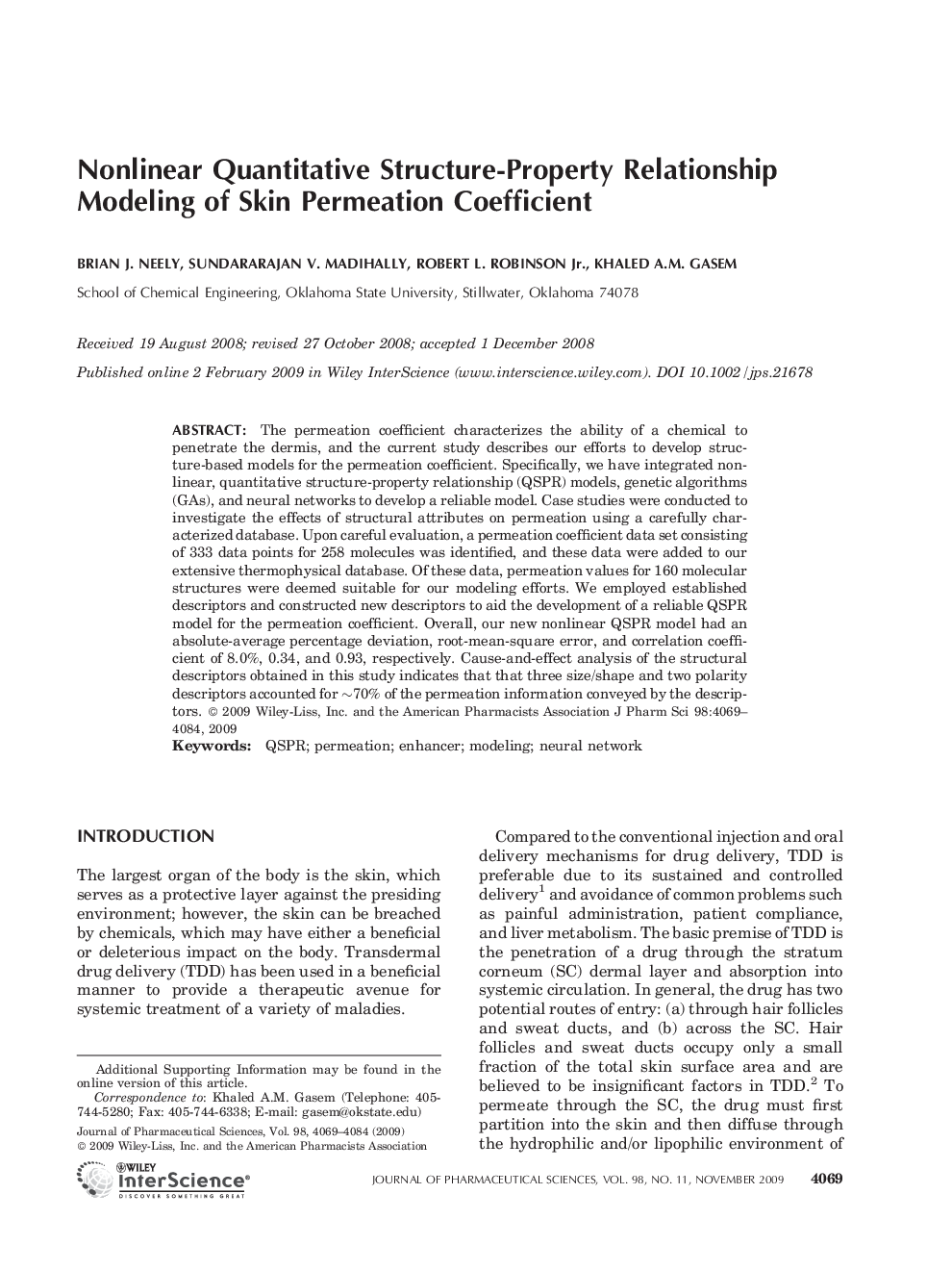| Article ID | Journal | Published Year | Pages | File Type |
|---|---|---|---|---|
| 2486941 | Journal of Pharmaceutical Sciences | 2009 | 16 Pages |
Abstract
The permeation coefficient characterizes the ability of a chemical to penetrate the dermis, and the current study describes our efforts to develop structure-based models for the permeation coefficient. Specifically, we have integrated nonlinear, quantitative structure-property relationship (QSPR) models, genetic algorithms (GAs), and neural networks to develop a reliable model. Case studies were conducted to investigate the effects of structural attributes on permeation using a carefully characterized database. Upon careful evaluation, a permeation coefficient data set consisting of 333 data points for 258 molecules was identified, and these data were added to our extensive thermophysical database. Of these data, permeation values for 160 molecular structures were deemed suitable for our modeling efforts. We employed established descriptors and constructed new descriptors to aid the development of a reliable QSPR model for the permeation coefficient. Overall, our new nonlinear QSPR model had an absolute-average percentage deviation, root-mean-square error, and correlation coefficient of 8.0%, 0.34, and 0.93, respectively. Cause-and-effect analysis of the structural descriptors obtained in this study indicates that that three size/shape and two polarity descriptors accounted for â¼70% of the permeation information conveyed by the descriptors. © 2009 Wiley-Liss, Inc. and the American Pharmacists Association J Pharm Sci 98:4069-4084, 2009
Related Topics
Health Sciences
Pharmacology, Toxicology and Pharmaceutical Science
Drug Discovery
Authors
Brian J. Neely, Sundararajan V. Madihally, Robert L. Jr., Khaled A.M. Gasem,
